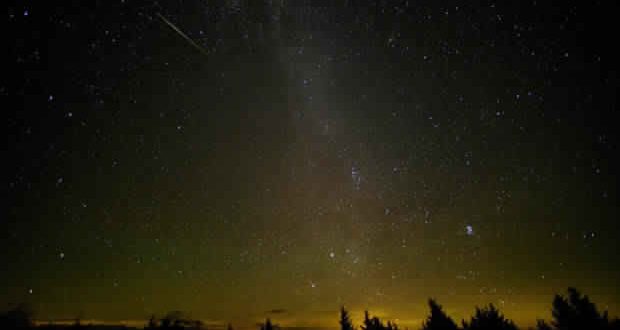A high-resolution camera on the International Space Station caught two Perseid meteors in the night sky on Aug. 10. The meteors were streaking between the station and the sky, and the second one is spectacular.
The Meteor project is about more than gathering stunning imagery. The camera can make spectroscopic observations of passing meteors, allowing scientists to gather information about their composition based on the wavelengths of light emitted as they burn. Knowing a meteor’s ingredients can help scientists figure out where it came from in the first place.
Though it’s possible to collect this information from the ground, there is less atmospheric noise distorting spectra observations recorded in space. The camera can also detect fine dust grains that burn high in the atmosphere that would otherwise be impossible to observe from earth.
Plus, crew members on the ISS orbit Earth 16 times per day, which means they have over 9 hours of dark, unobstructed skies to watch and record the show — every day.
Looking down, instead of up, at meteor showers is just another reason why being an astronaut remains the best job in space.
Agencies/Canadajournal
 Canada Journal – News of the World Articles and videos to bring you the biggest Canadian news stories from across the country every day
Canada Journal – News of the World Articles and videos to bring you the biggest Canadian news stories from across the country every day



